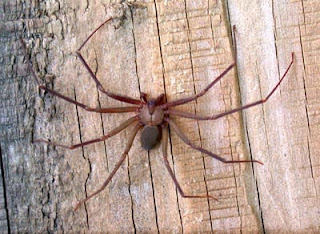Most spiders are not poisonous. Therefore, their bites do not cause any damage, so it is not necessary to treat them. This allows your own body to heal, which is the best for your good health to continue.
To find out if you have suffered a spider bite (and no other insect bite like a mosquito, for example), just look in the center of the bite mark.
If you see two small slits or holes then you most likely have a spider bite. Some people experience some mild symptoms or reactions to spider bites, even when the spider is not poisonous. To calm nerves and have more knowledge, here are some ways to feel better after having a spider bite.
Spider bites treatment
The first thing you should do is clean the area where you have the spider bite, to avoid any infection or other reactions occurring. The best way to clean your bite area is with warm water and soap. Then, dry the skin completely and apply an antibiotic ointment.
If you begin to experience any swelling around the area of the bite or itching, you may be experiencing an allergic reaction. You can stop this reaction by taking an antihistamine.
If you experience pain in the area of the sting, you can use acetaminophen, which is also called Tylenol. Tylenol is effective in reducing pain and swelling. Also in adults you can use aspirin to reduce inflammation and pain.
A great way to reduce inflammation without taking any medication is by simply pressing with a cold wet towel or ice pack, the area of the bite for 20 minutes or so.
If you are using an ice pack, be sure to wrap it in a small cotton cloth to keep the ice pack on your skin. If the spider that has bitten you is still nearby, you can easily identify that it is not actually a poisonous spider.
To catch a spider simply take a plastic cup and a small piece of paper. Slowly put the glass on top of the spider.
Next, keep the plastic cup pressed against the wall or on the floor, and slide the paper under the bottom, without lifting the glass up. Next, raise the glass taking care to keep a hand on the sheet of paper to keep the spider inside the plastic cup.
You can also use a glass cup, however these are heavier and sometimes harder and slower to put on top of the spider. If it moves too fast, the spider will flee. By using slow movements you will discover how easy it is to catch the spider in question.
If you have a child who is under six years of age who has been bitten by a spider, you should contact your doctor immediately.
Spider bite Symptoms
* Headache after a spider bite
*He has fever
* Begin to experience muscle aches and
* Has nausea
* Your skin around the bite area is discolored
Here are some spiders that might cause some additional symptoms if they bite you:
 Spider Stings-Black Widow
Spider Stings-Black WidowThese spiders are small and black, easily identified by a red mark in the form of an hourglass on the back.
The symptoms of a black widow sting are pain and swelling of the bite area, headache, dizziness, weakness, tremors, anxiety, sweating, nausea, tearing, muscle cramps and even immediate paralysis.
 If you think you have been bitten by a black widow, you must administer first aid as indicated above and contact a doctor immediately for further treatment.
If you think you have been bitten by a black widow, you must administer first aid as indicated above and contact a doctor immediately for further treatment.Brown brown recluse spider
This is a very small, brown spider. You can recognize this spider with ease, as it has a violin-shaped mark on its back. This spider stays in hiding and prefers small, dark and dry spaces.
The indications of a brown recluse spider bite are:
* Delayed pain
* Delayed itching
* Delayed burning and redness around the area of the sting
*Fever
*Headache
* Muscle aches and pains
* Nausea and / or vomiting
A brown recluse spider bite will gradually become a marked "eye" on your skin and develop a black blister.
If you experience the bite of a brown recluse spider, you should elevate the part of your body that has the bite and contact your doctor immediately.
Comments
Post a Comment